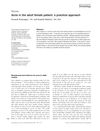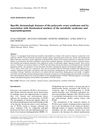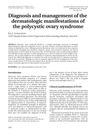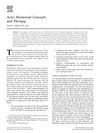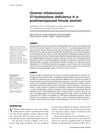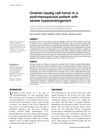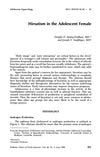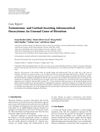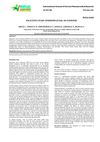Age-Dependent Endocrine Disorders Involved in the Pathogenesis of Refractory Acne in Women
November 2016
in “
Molecular Medicine Reports
”
testosterone DHEA-S prolactin LH estradiol cortisol hyperandrogenism hyperprolactinemia hypercortisolism facial seborrhea hirsutism irregular menses PCOS polycystic ovary syndrome dehydroepiandrosterone sulfate luteinizing hormone high prolactin levels high cortisol levels excessive facial oil excessive hair growth irregular periods
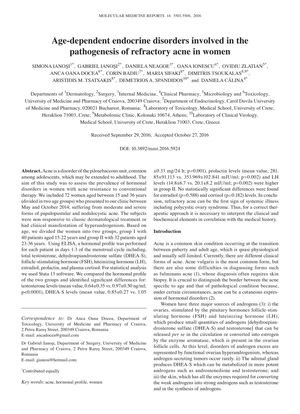
TLDR Hormonal imbalances, often indicating conditions like PCOS, are common in women with hard-to-treat acne, and a treatment approach addressing these imbalances may be needed.
The 2016 study investigated the prevalence of hormonal disorders in 72 women with acne that did not respond to conventional treatments. The participants were divided into two age groups: 15-22 years (40 patients) and 23-36 years (32 patients). Hormonal levels were measured and significant differences were found between the groups in testosterone, DHEA-S, prolactin, and LH levels, but not in estradiol and cortisol levels. The study found that 56.25% of the patients had increased levels of total testosterone and DHEA-S, with 61.11% showing refractory acne with hyperandrogenism and 38.8% having late-onset refractory acne without hyperandrogenism. Other hormonal imbalances observed included increased estradiol, increased LH, hyperprolactinemia, and hypercortisolism. The presence of acne in specific locations, along with other symptoms like intense facial seborrhea, hirsutism, and irregular menses, could suggest endocrine disorders. The study concluded that refractory acne in women often indicates systemic illnesses like PCOS and that a multidisciplinary approach is necessary, with hormonal treatment being a potential recommendation even when androgen levels are normal. The severity of acne was not found to correlate with the level of hormonal imbalances.
